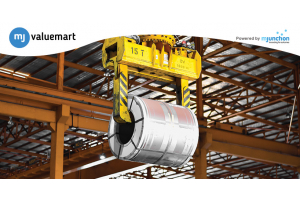MRO spares management: 7 trends to watch out for

In the ever-changing landscape of MRO spares management, staying abreast of the latest trends is important. By remaining up-to-date with the latest trends in MRO spares management, businesses can improve efficiency, minimise costs, enhance inventory management, and make informed, data-driven decisions to ensure the availability of vital spare parts. If you are looking for information on the latest trends for MRO spare parts management, here is a useful read:
1. Predictive analysis: Predictive analytics plays an important role by enabling accurate demand forecasting. By analysing historical data, identifying patterns, and factoring in various variables, businesses can anticipate future requirements with greater precision. This proactive approach empowers decision-makers to optimise inventory levels, ensuring that critical spare parts are available when needed while minimising the risk of excessive stockpiling or stockouts. By accurately forecasting demand, businesses can streamline their operations, reduce costs associated with excess inventory, and enhance customer satisfaction by minimising downtime.
2. AI-driven solutions: Intelligent automation can be applied to inventory management processes, such as automatic replenishment and real-time tracking of spare parts. AI algorithms can assess inventory levels, monitor usage patterns, and trigger automated reordering or restocking, ensuring that supplies are replenished in a timely manner. This automation reduces manual effort, minimises errors, and optimises inventory turnover, ultimately leading to cost savings and improved operational productivity.
3. 3D printing innovations: In MRO spare parts management, the main goal is to find a good balance between the cost of making spare parts, the time it takes to get them, and how many parts to keep in stock. 3D printing can help both manufacturers and suppliers achieve this goal. 3D printing is a type of technology used to create parts by adding layers of material together. Unlike other methods, it doesn't need a solid block to make objects. Instead, it builds them up layer by layer. It's usually quick, doesn't have high initial costs, and can produce more intricate shapes compared to traditional methods. In the context of MRO spares management, 3D modelling can be used to create virtual models of spare parts, components, and equipment. 3D printers can create spare parts made of metal or plastic whenever they are needed, without requiring any special tools, and in the exact amount required, without a minimum purchase requirement. This eliminates unnecessary overproduction and ensures that customers are fully satisfied. The basic concept is to save the computer-aided design (CAD) data of the spare parts and send them for production only when necessary. This decentralised and highly efficient process avoids the need for resource-intensive warehouse logistics.
4. Cloud-based inventory systems: Cloud-based inventory systems come with various benefits, including real-time visibility, centralised data storage and remote accessibility. With such systems in place, multiple stakeholders can collaborate seamlessly, access information on the go, and make decisions based on data. Moreover, cloud-based solutions provide scalability and flexibility, allowing organisations to adapt to changing demands and manage their MRO spares more effectively.
5. Sustainable and green practices: Sustainability has become an important factor for businesses across different industries. In case of MRO spares, organisations are constantly adopting processes that minimise wastage, optimise resource utilisation and limit environmental impact. By refurbishing or reusing MRO spares, companies contribute to environmental sustainability by minimising the amount of waste generated. Instead of discarding or disposing of parts that may still have useful life left, they undergo processes that restore their functionality and extend their lifespan. This approach reduces the need for new manufacturing, which in turn conserves raw materials and energy. Moreover, these sustainable practices often result in cost savings for organisations. By refurbishing or reusing MRO spares, companies can reduce their expenses associated with purchasing new parts. This can be particularly advantageous for expensive or specialised components. Also, organisations can benefit from reduced waste disposal costs and potential savings in transportation and storage.
6. Emphasis on collaborating with suppliers: Organisations are increasingly recognising the importance of building strong partnerships with their suppliers to ensure timely and reliable delivery of spares. Close collaboration enables proactive communication, sharing of demand forecasts, and joint problem-solving. By working closely with suppliers, organisations can streamline their supply chains, optimise inventory levels, and reduce lead times, ultimately improving overall operational efficiency.
7. Internet of Things (IoT): (IoT) has the capability to bring about a transformative impact on MRO spares management through seamless connectivity between devices, machines, and inventory systems. By incorporating IoT sensors into equipment, real-time data on performance, usage, and maintenance requirements can be gathered. This data can be harnessed to automate replenishment processes, initiate maintenance tasks, and optimise spare part inventories. The integration of IoT technology empowers organisations to move away from reactive maintenance approaches and embrace predictive and condition-based maintenance strategies.
By staying informed about these trends, you can capitalise on the latest techniques and strive for improved industry practices. It is essential to embrace a forward-thinking approach to adapt to changing market dynamics and maintain a competitive edge.





